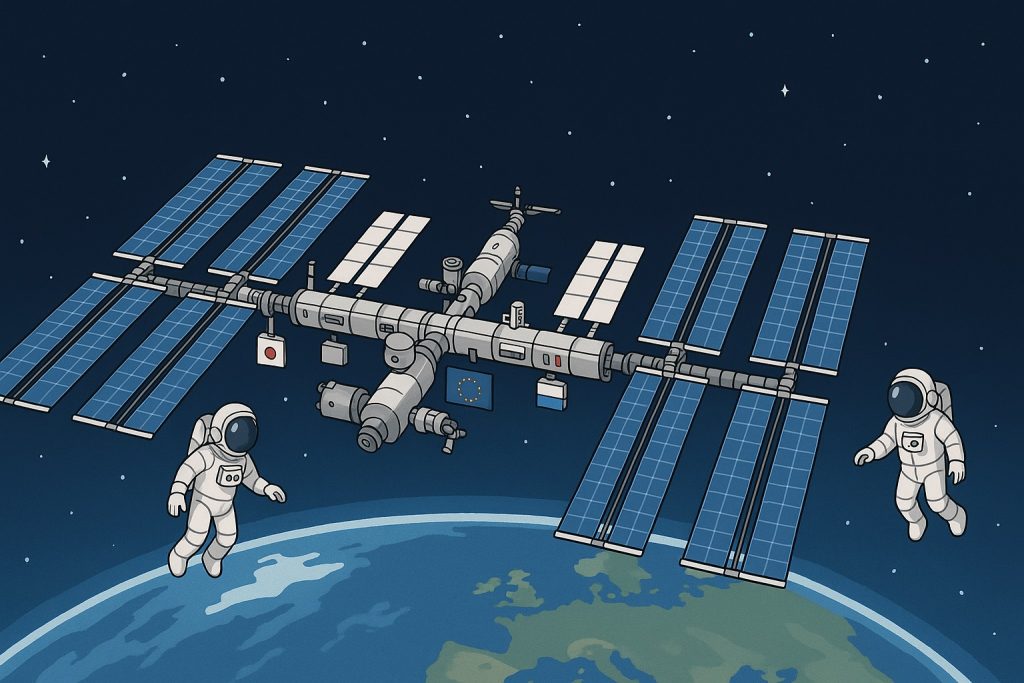The International Space Station (ISS) stands as one of the greatest achievements in human collaboration and engineering. Orbiting approximately 400 kilometers above Earth, the ISS is not just a scientific laboratory but also a symbol of peaceful cooperation between nations. Its story spans decades, beginning in the Cold War era and evolving into a modern hub of international science and exploration.
Origins: From Rivalry to Partnership
During the Cold War, the United States and the Soviet Union engaged in a fierce space race, marked by the launch of Sputnik (1957), the first human in space (Yuri Gagarin, 1961), and the Apollo Moon landings. Despite their rivalry, both nations recognized the benefits of space collaboration.
In 1975, the Apollo-Soyuz Test Project—a joint mission between the US and USSR—marked the first international crewed spaceflight, planting the seeds for future cooperation.
Planning the ISS
In the 1980s, the United States proposed Freedom, a space station project. Meanwhile, Russia was operating its Mir space station. By the early 1990s, after the collapse of the Soviet Union, plans were merged to form a single international station. This collaboration expanded to include:
- NASA (United States)
- Roscosmos (Russia)
- ESA (European Space Agency)
- JAXA (Japan)
- CSA (Canadian Space Agency)
Construction of the ISS officially began in 1998.
Construction and Expansion
The first module, Zarya, was launched in November 1998 by Russia. It was followed by the American module Unity a month later. Over the next decade, dozens of modules, solar arrays, and labs were added, including:
- Destiny (USA) – main science lab
- Columbus (ESA) – European lab
- Kibo (JAXA) – Japanese experiment module
- Canadarm2 – a robotic arm from Canada for assembly and maintenance tasks
Astronauts have continuously inhabited the ISS since November 2000, making it one of the longest-running human spaceflight missions in history.
Life and Research in Orbit
The ISS serves as a microgravity laboratory for experiments in:
- Human biology and medicine
- Materials science
- Physics
- Earth and space observation
- Technology testing for future missions
It also plays a crucial role in preparing for missions to the Moon and Mars by studying how humans adapt to long-duration spaceflight.
Challenges and Future
While the ISS is a marvel, it has faced many challenges:
- Technical failures and repairs
- Budget concerns
- Political tensions among participating nations
- The wear and tear of decades in space
The station is currently funded through 2030, after which it may be replaced or transitioned to commercial operators. NASA and other agencies are also planning the Lunar Gateway, a new station orbiting the Moon.
Glossary
- International Space Station (ISS) – A space station built and operated by multiple countries for scientific research and exploration.*
- Module – A pressurized section of the ISS used for living, working, or scientific experiments.*
- Microgravity – A condition in which people or objects appear to be weightless.*
- Orbital – Relating to the path of an object around a planet or star.*
- Canadarm2 – A robotic arm used on the ISS for maintenance, assembly, and cargo handling.*


